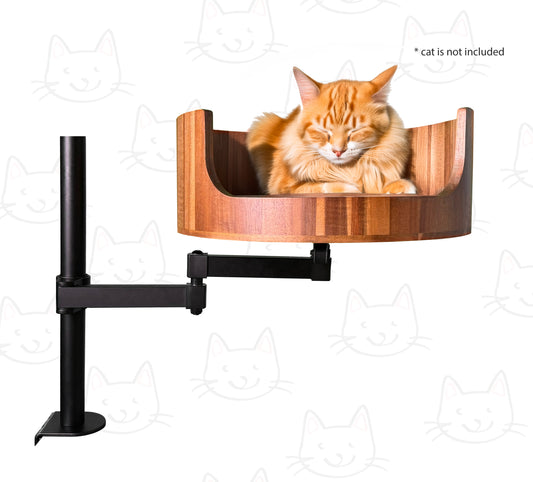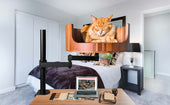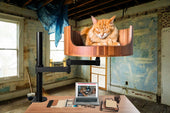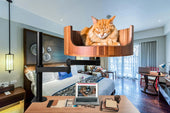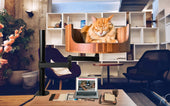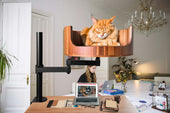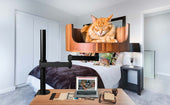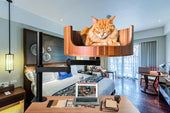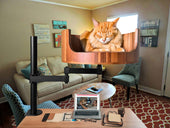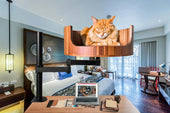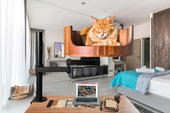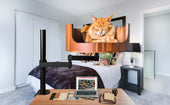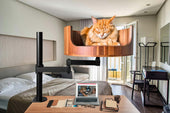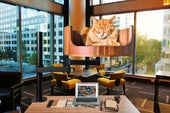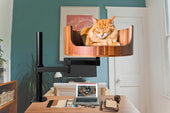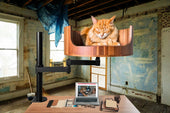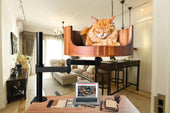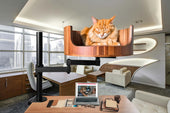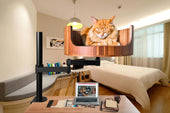
Cats Licking Then Biting: Understanding Their Behavior
Share
If you're a cat owner, you may have experienced the confusing behavior of your feline friend licking you affectionately one moment, only to suddenly bite you the next. This behavior can be puzzling and even frustrating for many cat owners, but understanding why cats lick and then bite can provide valuable insight into their behavior and help strengthen the bond between you and your pet. In this article, we will delve into the reasons behind this common feline behavior and provide tips on how to handle it.
Desk Cat Nest is a community of cat lovers who are dedicated to helping cat owners better understand their pets and provide them with the care and attention they need. With a team of experienced veterinarians and animal behaviorists, Desk Cat Nest aims to educate cat owners on various aspects of feline behavior, health, and wellbeing. In this article, we will explore the reasons why cats exhibit the behavior of licking and then biting, including potential triggers and ways to manage and prevent this behavior. By gaining a deeper understanding of your cat's actions, you can build a stronger relationship with your furry companion and ensure their overall happiness and wellbeing.
1. Cats licking then biting is a common behavior that is often misunderstood by cat owners.
2. This behavior is typically a sign of overstimulation or a natural predatory instinct.
3. Understanding the context in which your cat is exhibiting this behavior can help prevent unwanted aggression.
4. Providing appropriate outlets for your cat's energy, such as interactive toys or scratching posts, can help redirect their behavior.
5. Consulting with a veterinarian or animal behaviorist can offer additional insight and guidance on managing this behavior effectively.
Why do cats lick then bite?
Cats often exhibit a behavior where they will lick someone or something and follow it up with a gentle or sometimes not so gentle bite. This behavior can be confusing for cat owners, but it is generally a sign of affection. Cats use licking as a way to groom themselves and their loved ones, as well as a way to communicate their bond with others. The biting that follows is usually meant to show their playful side or to assert dominance. It can also be a form of communication to let the recipient know that they have had enough attention. Understanding the context and body language of the cat can help decipher the reason behind this behavior.
When does licking then biting become a problem?
While licking then biting is usually harmless and a common behavior among cats, there are situations where it can become problematic. If a cat's bites are too rough or aggressive, it can indicate that they are overstimulated or anxious. Cats may also lick and bite excessively if they are experiencing pain or discomfort. In some cases, this behavior can be a response to stress or fear, especially if the cat feels threatened or is in a new environment. It is important to monitor the frequency and intensity of licking then biting to determine if there is an underlying issue that needs to be addressed.
How to address licking then biting behavior?
If your cat's licking then biting behavior is becoming problematic, there are steps you can take to address it. First and foremost, it is important to observe and understand the triggers that lead to this behavior. Providing your cat with appropriate toys and activities to release excess energy can help reduce the frequency of licking then biting. Additionally, creating a calm and safe environment for your cat can help alleviate stress and anxiety that may be causing this behavior. If the behavior persists or becomes more aggressive, it is recommended to consult with a veterinarian or animal behaviorist for further guidance on how to address this issue.
Frequently Asked Questions
Can the Desk Cat Nest help with cats who lick then bite?
Yes, the Desk Cat Nest is designed to provide a safe and comfortable space for your cat to relax and feel secure. By giving your cat a designated area to retreat to, it can help reduce stress and potentially decrease the behavior of licking then biting.
How does the Desk Cat Nest work?
The Desk Cat Nest provides a cozy and enclosed space for your cat to retreat to. Cats often exhibit undesirable behaviors such as licking then biting when they are feeling overwhelmed or stressed. Giving them a quiet and comfortable space to relax in can help alleviate these feelings.
Will my cat like the Desk Cat Nest?
While every cat is different, many cats enjoy having a cozy and enclosed space to retreat to. By providing a comfortable and safe space for your cat, they may be less likely to exhibit behaviors like licking then biting.
Is the Desk Cat Nest easy to set up?
Yes, the Desk Cat Nest is easy to set up and can be placed on any flat surface. Simply unfold it and place it in a quiet area where your cat likes to relax. Your cat can start enjoying their new space right away.
Can the Desk Cat Nest be used for other purposes?
While the Desk Cat Nest is designed to help with specific behaviors like licking then biting, it can also be used as a cozy bed for your cat to lounge in. Many cats enjoy having a designated space that is just for them.
In conclusion, the Desk Cat Bed is a valuable choice for cats prone to licking then biting behaviors. With its comfortable and cozy design, the Desk Cat Bed provides a safe and secure space for your feline friend to relax and feel at ease. By offering a designated spot for your cat to rest and play, the Desk Cat Bed can help reduce stress and anxiety, ultimately decreasing the likelihood of licking then biting tendencies. Invest in the Desk Cat Bed today to provide your beloved pet with the comfort and security they deserve.

